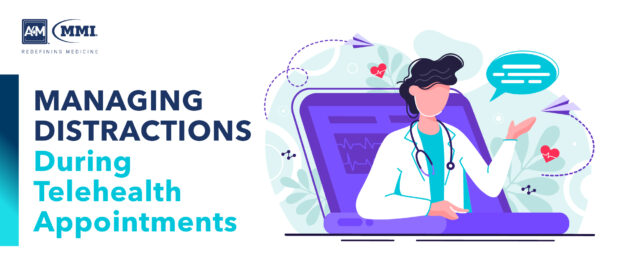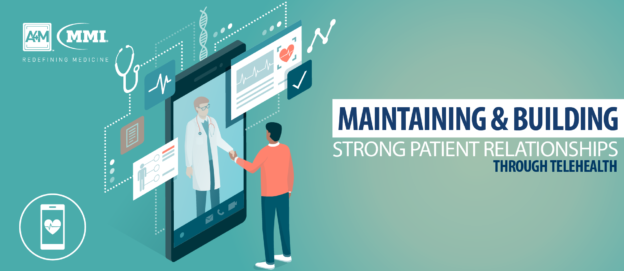The recent rise in telemedicine use has taken the patient-provider relationship online, offering a platform for clinicians to continue delivering care while ensuring patient health and safety by mitigating unnecessary risk of COVID-19 exposure. For some healthcare practitioners this may be their first encounter with digital care services, and they may be wondering how social distancing guidelines are going to affect the industry as a whole and more specifically, their connection with patients. Amended regulations now allow for the offering of digital medical services without a prior established relationship with patients, leading to an influx of new patient-provider relationships and an increased need for effective telehealth communication strategies.
According to a study conducted by Public Values Research, the doctor-patient relationship is the top priority for patients and an important factor for how they value the quality of care. Although it cannot replace in-person medical care, telehealth can be used to augment the experience by providing an opportunity for building and maintaining consistent, long-lasting relationships and expanded accessibility to care. The benefits are wide-ranging; both medical professionals and their patients can develop new lines of communication and strengthen existing ones, promote continuous care, and improve overall population health outcomes.
The Patient-Provider Relationship
In today’s healthcare environment screen-side manners are just as important as good bedside manners. As the new model of virtual care negates personal contact and can make caregiving more challenging, it requires tailored strategies to help establish relationships and foster meaningful interactions with patients online. By implementing some of the telehealth best practices and communication strategies below, clinicians can help ensure a positive patient experience while strengthening these relationships.
Best Practices
Maintain a Professional Appearance
Despite the online nature of telehealth interactions, wearing clinical apparel during virtual visits is an important component of conveying professionalism, trust, and quality of care. Per an article published on Patient Engagement HIT, “Dressing the part will go a long way in instilling confidence in a patient receiving care via telehealth, especially for the first time, as will using body language.”
Maintaining a professional appearance relies on more than simply wearing a lab coat during telehealth appointments; physical cues such as looking into the camera, paying close attention, and reducing distractions all play a significant role in the patient’s perception of provider engagement and their satisfaction with the visit.
Give Patients Your Undivided Attention
Clinicians need to remember that 70% of all language is non-verbal and thus, body language and other physical cues can influence a telehealth encounter. Therefore, clinicians should avoid taking notes during appointments, writing or entering data in the electronic medical record, and any other forms of multi-tasking to give patients their undivided attention. Healthcare providers should also remain aware of their facial expressions as these can convey both positive and negative emotions to the patient – such as compassion, disinterest, or carelessness – and look directly into the camera instead of the patient’s on-screen image.
Be Prepared
As part of ensuring a successful, positive patient experience, clinicians need to be well-prepared for virtual visits with all of the necessary tools at hand. However, proper preparation includes more than access to medical equipment; to guarantee a seamless online interactions clinicians should do the following:
– Understand how to use equipment and test it beforehand
– Ensure proper camera, microphone, and speaker placement
– Clear the physical space of distractions
– Ensure good lighting
– Keep interactions private and secure
– Wear professional clothes, solid and preferably light blue colors
– Review patient history and electronic medical records before the appointment
Establish Rapport
Creating an open, warm environment via remote technology can be difficult yet remains paramount. Part of ensuring a positive overall telehealth experience is communicating empathy despite distance and time constraints so as to establish a meaningful connection with patients.
“Telehealth visits may not be any longer than ten to fifteen minutes. So, establishing a rapport immediately is important,” Jonathan Mack, PhD, RN, NP, director of a telehealth training program at the University of California San Diego told Patient Engagement HIT in an interview. “People tend to look down at the screen during video calls, so that translates to someone on the other side as not maintaining eye contact. The clinician needs to be trained to listen and look into the camera because that’s what’s going to appear on the screen for the patient as though the provider is looking at the patient.”
Establishing rapport and clear, emphatic communication can have a significant impact on the success of telemedicine visits, driving satisfaction while further strengthening patient-provider relationships.
The Many Benefits of Telehealth
Research has found that an established patient-provider relationship is associated with fewer and shorter hospitalizations, increased reported patient satisfaction, as well as more consistent utilization of preventative strategies. In addition, the number of missed appointments decreases with the use of telemedicine, which can help prevent adverse long-term complications and poor health outcomes.
The convenience and increased engagement of patients with providers associated with telemedical strategies can also replace the urgent care or ER visit, further strengthening the doctor-patient relationship.
From a financial standpoint, telemedicine visits tend to be cheaper than office visits for patients and costs saved from diverting patient use of expensive healthcare facilities (e.g. emergency care) can generate long-term savings.
Looking professional, being prepared, communicating clearly, and establishing rapport are all effective communication strategies that can foster positive patient-provider interactions. Implementing these best practices can help clinicians guarantee a high level of patient satisfaction and quality of care during telemedicine encounters as well as during future in-person services.
From a post-pandemic perspective, continued use of telehealth strategies can be expected for the benefit of the entire healthcare system, both as it recovers from outbreak demands and beyond. With this in mind, providers utilizing telemedicine to care for their patients at this time can better position themselves to form lasting, dependable patient-provider relationships and prepare for a future of remote medical care.



